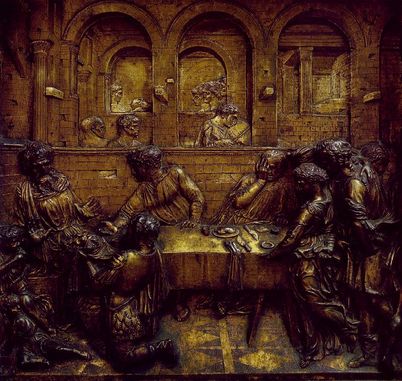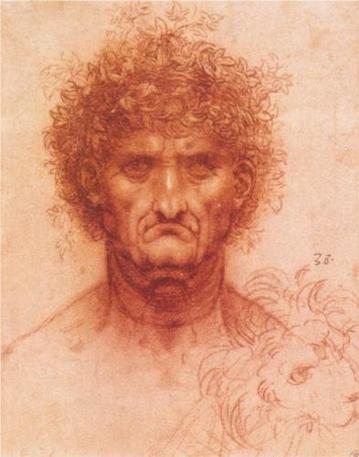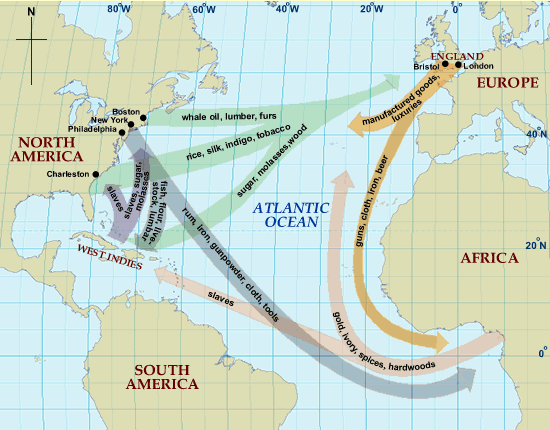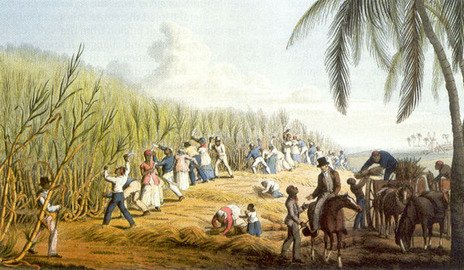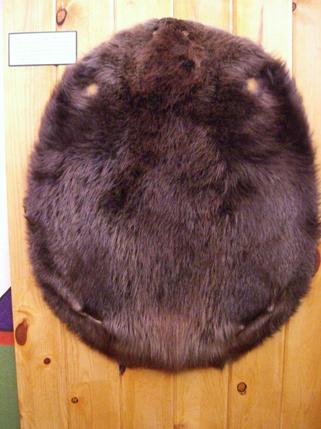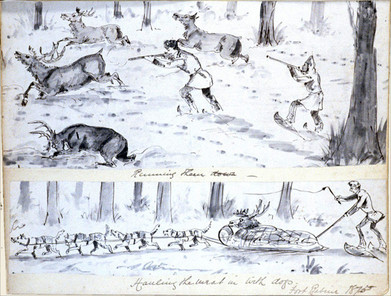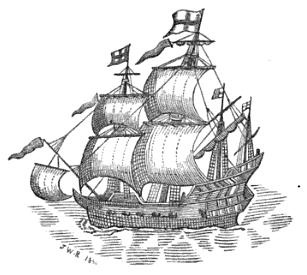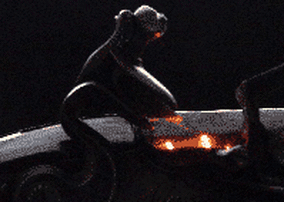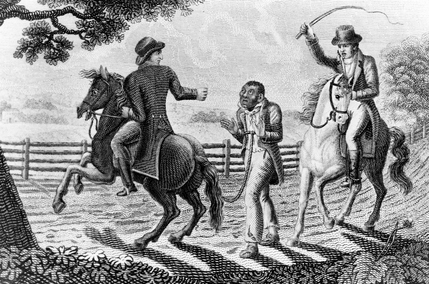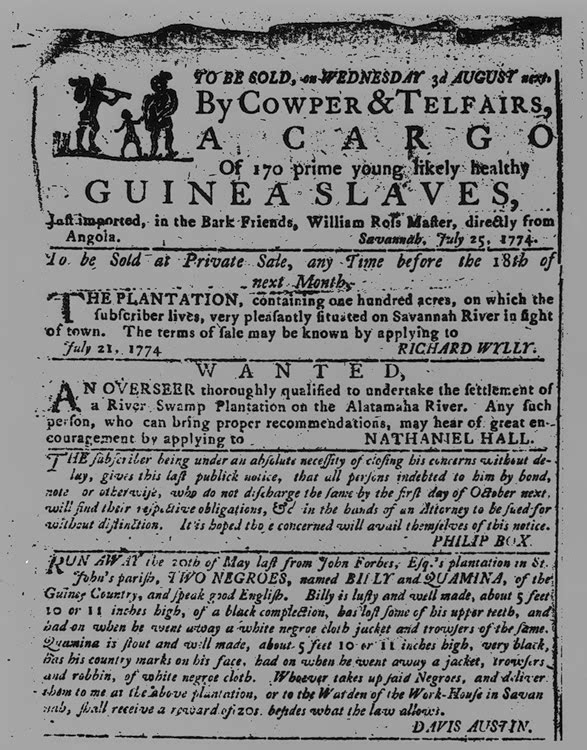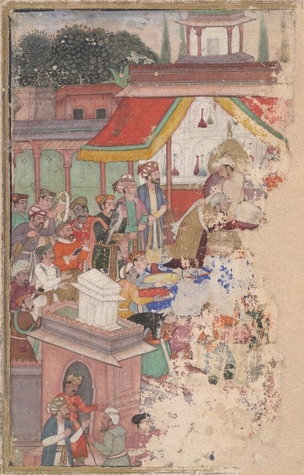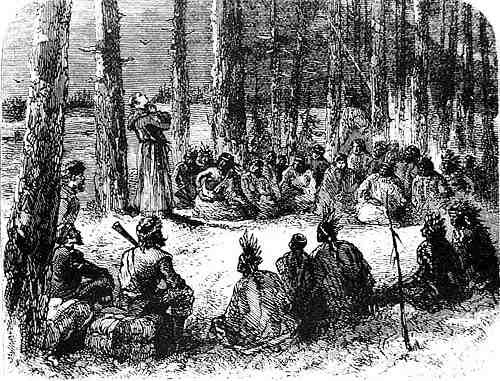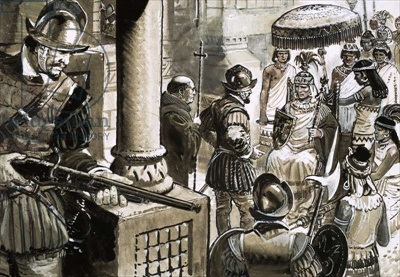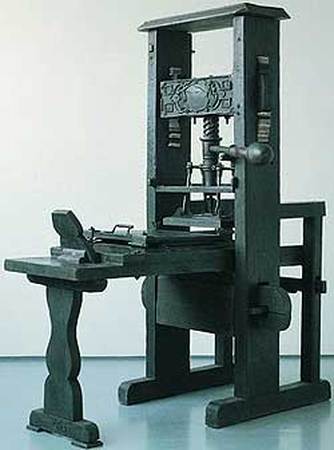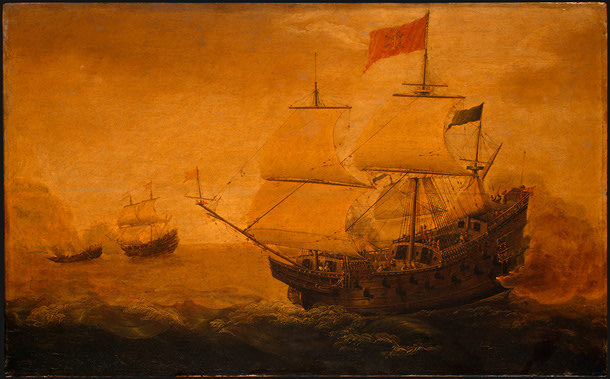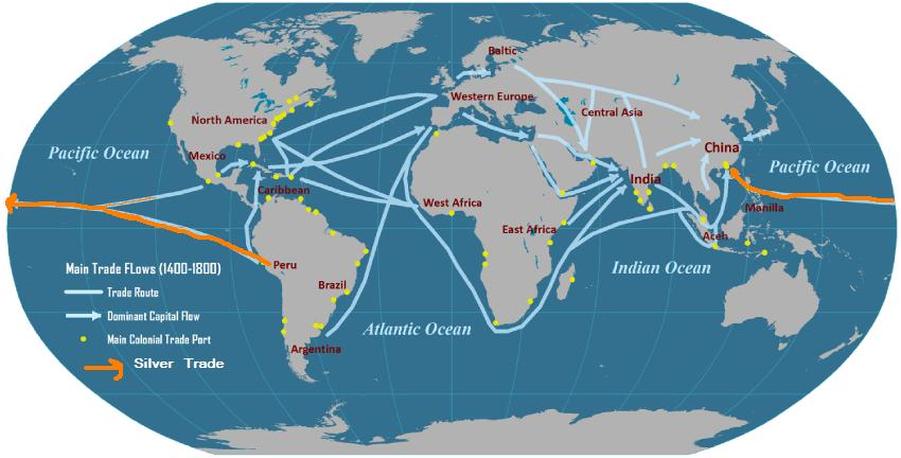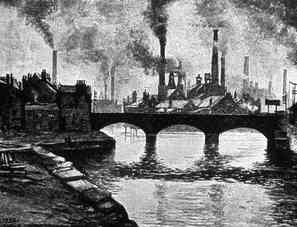AGMSPRITE Analysis
Sarah Babbie, Abigail Hager, and Jason McEntire
Art
European Renaissance (1300 - 1600)Powerful families, such as the Medici family, in the Italian city-states like Florence, Venice, and Milan became rich on trade that happened in the area, and used that wealth to patron the arts.
Unlike the art of the Medieval Age, Renaissance paintings focused on the application of Humanistic ideals, the focus on the human life, form, and expression. Humanism was learned from the ancient Greek and Roman ideas coming in the area as a result of trade with the Ottoman Empire. Some of the artists that were commissioned were the architects like Michelangelo, and Brunelleschi. The most famous sculptors were Leonardo da Vinci, and Donatello. And wrapping it up, the best painters were Albrecht Durer, and the Van Eyck Brothers. Protestant ReformationThis era, during the Renaissance, was marked by the schism of Catholicism, and the Protestant religions that emerged. These Protestants used already established trade routes, notably the Colombian Exchange, to flee from Europe to new areas to settle. Unlike the Catholics they seldom converted native peoples to their respective Protestant Religion.
|
Geography
Agriculture
Eurasia to the AmericasEurasian foods such as wheat, rice, sugarcane, grapes, garden vegetables and fruits, and weeds came to the Americas through the Colombian Exchange and made a European diet possible.
Sugarcane was by far the most adopted crop in the Americas. Sugar was used as a medicine, a spice, a sweetener, a preservative, and even sculpted decorations. In short, it was extremely valuable. Portuguese in Brazil dominated sugar production on their large-scale plantation from 1570-1670. They set up huge plantations in South America, most concentrated in Brazil, that were mainly labored on by African slaves. The British, the French, and the Dutch produced sugarcane in the Caribbean. After seeing the Portuguese profit from sugar, they broke the Portuguese monopoly on sugar by creating their own plantations after 1670. These plantations were also labored on by African Slaves. Why did they use slave labor? The growing and production of Sugarcane was very labor intensive, and the get the best profit, the ideal of Capitalism, it had to be done on large-scale plantations, labored on by West African slaves from the Transatlantic trade Why did they use West African slaves? The American native population was wiped out by European diseases from the initial encounters, so they simply didn't have enough people to meet the demand. They used African slaves for the facts that they were already acclimatized to the tropical climate, they were resistant to European diseases, and generally they were prisoners of war, so being soldiers they have the physical capacity to do the hard labor. |
The Americas to EurasiaAmerican foods like corn, potatoes, tomatoes, and cassava came to Eurasia and Africa and became an essential part of their diet.
In England a new influx of American foods via the Colombian exchange supported a huge economic growth, from 60 million in 1400 to 390 million in 1900. Since these foods were generally pretty hearty, they were easy to grow in large quantities, which made them a cheap food source for Europe's industrial workers. However, while these foods did give Europe a huge boost in standard of living, it also hurt them. A few hundred years after the potato was introduced, a fungus came into Ireland from America on a shipment of product and resulted in the huge Potato Famine. In China corn, peanuts, and sweet potatoes supplemented their traditional rice and wheat diet. These American foods coming in also helped sustain the modern population explosion in China. By 1900s American food represented 20% of Chinese food production, and that all started with the Colombian exchange bringing them over. In Africa the most widely adopted American foods were Corn and Cassava (also called Manioc). Corn was used as cheap food for slaves on boats of the Transatlantic trade. Corn was a easy to grow food source, and was easily planted and harvested. Those factors meant it was cheap and readily available, so they put it to use to feed the huge number of outgoing slaves, which were a part of both the Triangular Trade and the Colombian Exchange. |
James Stirling:
|
Fur Trade
|
|
Why They TradedDuring this time, 1450-1750 there was a sudden cooling period, called the Little Ice Age, and that increased the demand for furs. That higher demand raised prices for those furs, up to four times as expensive in France between 1558 and 1611.
The ideas of Capitalism and Mercantilism ensured that the Europeans wanted those furs at lowest price, so they can make most money. To get them at the lowest price they needed to hunt to get them. However, all of the species they wanted to make furs were extincted in Europe, animals such as the beaver, rabbit, sable, marten, and the deer. So they traveled to the Americas and get them for cheap! By doing this they expanded the trade networks to the Americas. Where They TradedThe French exerted their influence primarily in the St. Lawrence Valley, the Great Lakes area, and Mississippi, the British in the Hudson Bay area, and the Dutch along the Hudson River. They rarely actually trapped or hunted their animals directly though, they usually traded with Natives to get furs.
What They TradedThe Europeans traded guns, blankets, metal tools, and alcohol for the hunted animals. The Huron (Eerie and Ontario Lakes) exchanged upwards of 30,000 pelts a year, and in exchange got copper pots, metal axes, knives, textiles, guns, and alcohol. All of the new furs coming in at cheap prices raised the standard of living for the Europeans as well as the Natives. The European goods replaced older tools and gave the Natives a higher societal productivity.
The ConsequencesHowever, it made the Natives dependent on European goods, which meant they needed to trade to get the goods they required, which meant more depletion of local animal species. For example, by the 1760s the British trade companies were taking upwards of 500,000 deer a year, seriously depleting the deer population in the Hudson Bay and American Colonies regions. That process led to the near extinction of all fur trade species in the Americas, especially the beaver.
|
Military
British East India CompanyBritish East India Company gained many military functions in India. They did this through a combination of military confrontations and political alliances.
MercantilismMercantilism spurred many wars in Europe. If the only way for a country to gain wealth was to take it from another, war was often seen as the answer. This is most notably seen in the Anglo-Dutch Wars and the Franco-Dutch Wars. These conflicts in turn encouraged more competition between countries as well as within them to manufacture a higher quantity and quality of weapons.
|
Social
Triangular Trade and SlaveryThe triangular trade changed the social interactions in throughout the world completely by creating a race of people who would be seen as lesser. In Africa, it led to the Africans themselves being more power driven. A group that had more political power were more of “people” than groups that had less, this is the reason why Africans could so easily sell one another for goods.
Excerpts from Slave Narratives - Ayuba Suleiman Diallo
This can be seen in the beginning of this slave account. It shows tribes being enemies of each other and “selling Negroes to buy paper and other necessities”, this shows the decreased value of human life among these people and to whomever they were trading with. However, this only worsened the conflict that was already going on here. The new conflict really was the idea that all African people could become slaves and thus, were worth less than any pale skinned individual.
From the account in the last paragraph, it can be inferred that the people they were selling Negroes to were European, based off of prior knowledge. This brings up the idea that the Europeans did not see the Africans as humans, and this kick started the racism that still continues with some people today. Because the people were sold like goods and like cattle, they eventually got to the point where that was okay and where people could be seen as tools. Silver Trade and SlaveryThe Global Silver Circulation also changed the social standings of many people. With more money coming in, countries that were heavily involved such as Spain and Portugal received an influx of money. Most of this money stayed with the rich, while the poor stayed much the same. It also lowered what money was worth in China, and in a reverse effect, made the poor, poorer.
The same ideas are tied into Joint Stock Companies as well as into the ideas of mercantilism. Joint Stock Companies had rich investors investing into a shipping company which would generally make money and double what they had before. Mercantilism had a few ideas: Exporting more than what is imported. What makes this important? The idea that there should be a larger working force than a managerial force. This meant that people would have more people working for them, and they would want to get work done cheap. People on top of the companies, or people who somehow managed to create a company could rise higher in their social class. People who could not do this stayed in the lower class. This emphasized the ideas that were already set up: Those who could afford an education would always be able to stay at their level, and those who could not would have to struggle their way up. |
Political
Government SupportQueen Elizabeth I was very supportive of the many joint-stock companies at the time. As evidence of this, she gave the British East India Company a Royal Charter to trade in India. The company was given explicit permission by Nuruddin Salim Jahangir, the Emperor of India, to trade, live, and do what they would in many parts of India.
In EuropeThe governments of Western European countries understood the benefits of mercantilism and enforced its principles through laws and taxes. Tariffs were placed on imported goods in order to decrease importation as well as support local manufacturing. England in particular used its government to enforce the theory of mercantilism. It did this with the Navigation Ordinance of 1651, stating that all English trade was to be conducted on English ships, and with many other Navigation Acts.
|
Religious
Intellectual
What Was HappeningIntellectually, this was a time of great growth, but most of the expansion was a continuation of what was already happening. Rather than looking directly at the trade routes for this spread of ideas, though, another source should be greatly noted. The Gutenberg Printing Press allowed for the creation of many books that would print ideas such as religion in the form of the Bible, how-to books The Prince by Machiavelli or The Wealth of Nations, and more fantasy type books that could spread the lore of various places. These books that would be printed would go along the trade passages and spread the ideas of one culture to another.
How It Changed ThingsAn example of this that shines above the others is religion. The mass printing of bibles allowed for more people to be literate as a whole, but it also allowed for people such as Pizarro to spread their ideas around and take over land in the hopes of making more money for their country. The search for new goods would lead to the spread of how-tos, such as Cortes’s guide to taking over Native American civilizations. This helped further the European conquest of the Americas, which led to them being able to use their own resources cheaply, which goes back to Mercantilism again.
|
Technological
Making ImprovementsThe coastal countries of England, Spain, and Portugal had the most impressive of any European navies during this time period. This is because of the economic competition between these three major players in the Trans-Atlantic trade. These countries moved on to more advanced technologies used in their ships. The use of sails on their boats instead of oars allowed them to make use of the trade winds,and travel more efficiently. They also made more stable ships. The Galleons were wider than other ships before it, making it less likely to tip far on difficult seas. They also re-purposed existing ships for new uses. The Carrack, which at one point was a warship, was converted to a cargo ship, capable of holding between five and twenty tons of goods and resources. Broadside canons were also put into ships at this time, allowing for a new type of ship to ship combat. All of these innovations in technology were a consequence of the greater amount of trade these countries were participating in.
|
Economic
Silver TradeThe process started in Brazil, in the few giant silver mines. After it was mined in South America, it was brought to the Philippines for processing. From the Philippines it was shipped to China in coins.
The global silver circulation obviously means that there was more silver in mint. All of that money went to China, where the value of silver decreased to almost nothing. How It HelpedHowever Spain gets richer. They took a portion of the silver they mined before it was shipped to China, and they then took that money to China and bought goods like silks and spices. That depreciated the Chinese economy further, and surprisingly also the Spanish economy.
How It HurtThe Spanish never used any of the silver money they mined to fund internal improvements, they only imported foreign goods. That process eventually collapsed the economy and the fragile Spanish government.
|
Charter of the Dutch West India Company : 1621
This is the documentation of the formation of the Dutch West India Company In this they say, "Be it known, that we knowing the prosperity of these countries, and the welfare of their inhabitants depends principally on navigation and trade, which in all former times by the said Countries were carried on happily, and with a great blessing to all countries and kingdoms; and desiring that the aforesaid inhabitants should not only be preserved in their former navigation, traffic, and trade, but also that their trade may be encreased as much as possible..." In short, they are saying here that global trade is necessary for the health of a nation, which has been proven true. When countries do not trade outside of their region, they never gain new resources, which means they never innovate, and during this era hey would be taken over by larger, healthier governments. This was seen by the Spanish and French take over of The Americas and the Caribbean.
The Joint Stick Companies, like the one mentioned here, were created for the purpose of facilitating global trade for Europe. They raised the wealth of Europe, and the technological and intellectual base of the areas they traded with, like North America in the fur trade. http://avalon.law.yale.edu/17th_century/westind.asp |
Impact on AfricaThe impact was greatest in West Africa, which supplied the largest number of slaves. Other areas in Africa did supply slaves, but the majority came form West Africa. Two-thirds of those West African taken were males, severely hurting the societies they came from, since there was then no males to do the traditional roles of hard labor they normally would.
Africans who engaged in slave trading made a huge profit from the trade, especially since European merchants were prepared to pay high prices for slaves. By the 1700s, slaves were Africa’s main export. However, this massive slave trade actually hurt the African economies. Giving away two thirds of their population was a terrible choice, that left only one third to produce enough food for not only their villages and cities, but also for the captive slaves. That rush for food left them with no one to specialize in finer arts, and they fell behind the rest of the globe. Politically, as African rulers organised the capture of slaves, traditions of the treatment of slaves were created. These traditions were brutal and were a constant intervention into the people’s lives. Also, rival African rulers competed over the control of slave-capture and trading, wars could, and did, result. That infighting reduced societal efficiency, and set also worked to set the African continent as a whole behind the rest of the world. |
Impact on the AmericasBlack slaves played a crucial part in the economic development of the Americas. First of all, they made up for laborer shortages. The Europeans that came to the Americas had brought diseases that decimated local populations. That reduced the potential for securing labor from the Natives. Not many Europeans migrated to the Americas as workers, so they could not rely on countrymen to labor on their plantations. So they needed another reliable work force; West Africans.
This was true in Brazil and the Caribbean, where Africans became the largest section of the population. This was also the case in parts of North America, although white people outnumbered black people here. This plantation system produced social divides between the rich white and poor black communities, which America can still see even today. The divide was reinforced by segregating black and white communities and discouraging inter-marriage, and also by the reluctance to free black people from slavery from one generation to the next. This is really only unique to North America though, in the Middle East and in South America there was a degree of social mobility. Both inter-marriage and slave liberation were more common. But, one positive factor came out of this: the creativity of the black communities. They developed new identities, which mixed African tradition, European culture, and resulted in the American "melting pot". |
Impact on EuropeThe slave trade resulted in the economic transformation of England. During the 1700s, England was the first country in the world to industrialize, in terms of an economic shift towards manufacturing and commerce, and the progress of technology.
The English cotton mills, which became the emblem of the Industrial Revolution, depended on the cheap slaved-produced cotton from the Americas. English consumers also benefited from other goods such as sugar. The profits gained from the slave trade gave the English an extra source of capital. Both the Americas and Africa became useful additional export markets for English manufacturers. However, the slave trade was not the only factor in English industrialization. The progress of agriculture, the advance of technology, the stability of political systems, the local availability materials such as coal all helped to add to result in the Industrial Revolution. Slavery was just another one of these factors, not the only factor. |
